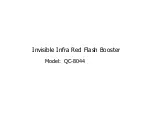
D
–
38
D
Flash modes and functions
Flash output level compensation and exposure compensation
Making exposure compensation
Exposure compensation allows you to make both the subject and background
brighter or darker by intentionally modifying the correct flash exposure. This is
useful when a subject of extremely high or low reflectivity is included in the scene
or when you want to create flash photographs to match your creative preferences.
Some plus compensation may be necessary when the background includes a
highly reflective surface. Likewise, some minus compensation may be required
when the background is dark or includes subjects of low reflectivity.
•
In i-TTL and Auto Aperture fl ash mode
Make exposure compensation on the camera. For more details, see your camera
user’s manual.
In Non-TTL auto fl ash and Manual fl ash mode
In the Non-TTL auto flash mode, the correct exposure can be obtained when
the same aperture is set on the camera as that set on the SB-900. Therefore,
to make exposure compensation, vary the aperture set on the camera while
retaining the aperture set on the SB-900 or vice versa.
In the Manual flash mode, calculate the proper aperture for the correct exposure
from the guide number and the shooting distance (
k
D-22). Then, use a larger
or smaller aperture on the camera to make exposure compensation.
As a basic guide, set a wider aperture on the camera or lens to make the main
subject brighter or a smaller aperture to make it darker.
■
•
■
•
•
•
Содержание 4807 - SB 900 Speedlight
Страница 1: ...SB 900 User s Manual En Autofocus Speedlight ...
Страница 13: ...A 13 A Preparation ...
Страница 141: ......
Страница 142: ......
Страница 143: ......
















































